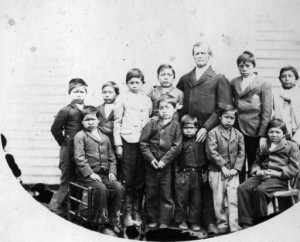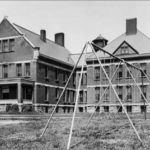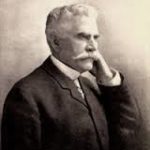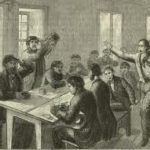Though women, and especially young girls, may have had fewer rights and protections under traditional white sensibilities, boys were also vulnerable to involuntary commitment. Navajo James Hathorn became a patient at the Canton Asylum for Insane Indians in 1904, when he was either six or eight years old. (See last post concerning another young patient.) Hathorn’s mother had suffered some problems during delivery, which affected James’s motor skills and language development. His problems were so severe that no one on his reservation could, or would, take care of him. He received ongoing medical care from Dr. Turner, mainly anti-spasmodics and physical therapy, which seemed to be helpful. At the time, there were 23 males at Canton Asylum, so presumably this little boy lived among them.
Though O. S. Gifford was not a trained psychiatrist as Dr. Harry Hummer was, he surely didn’t believe the boy was insane. Though he was probably taken to, and accepted by, the asylum with the best of intentions, Hathorn’s life had to be miserable. Authorities and family at the reservation, Gifford, and Dr. Turner probably understood Hathorn’s medical needs to be extreme, but putting a disabled child into an asylum with patients who were sometimes violent could not have been the best solution. Hathorn died at the age of 19 or 21, with little to indicate that he had improved to any great degree.
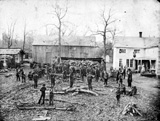
Huron (Wyandot or Wyandotte) Boys Learning to Chop Wood at Wyandotte Mission School in Kansas, 1880 to 1890, courtesy Library of Congress
______________________________________________________________________________________
